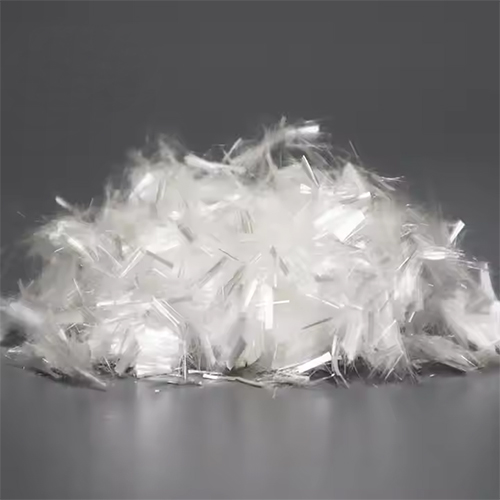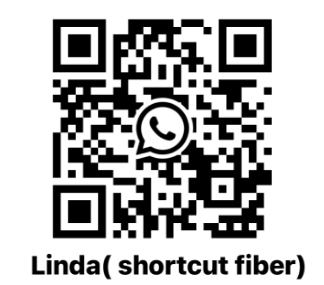PLA Fiber

PLA fiber or polylactic acid fiber, is a type of biodegradable fiber that is derived from renewable resources such as corn starch or sugar cane. It is produced through a process of fermentation and polymerization of plant-based materials, making it an eco-friendly alternative to traditional petroleum-based fibers like polyester.
PLA fiber is known for its good tensile strength, UV resistance, and breathability, which make it suitable for a wide range of applications, including textiles, packaging, and non-woven products. It is also used in medical devices and 3D printing due to its biocompatibility and compostable properties.
The production of PLA fiber results in lower emissions of greenhouse gases compared to conventional synthetic fibers, contributing to a reduced carbon footprint. Furthermore, PLA fiber can be composted under industrial composting conditions, breaking down into water and carbon dioxide, which helps to mitigate the problem of plastic waste in the environment.
Despite its benefits, there are also challenges associated with PLA fiber, such as its relatively lower durability compared to some synthetic fibers and the need for careful management of end-of-life disposal to ensure proper biodegradation.
Overall, PLA fiber represents a promising step towards more sustainable materials in a variety of industries, aligning with a growing global emphasis on environmental responsibility and the circular economy.
Sure, below is a table that introduces the characteristics and uses of PLA (polylactic acid) staple fiber:
| Characteristic | Description |
|---|---|
| Renewable Source | Made from fermented plant starch (e.g., corn, cassava, sugarcane). |
| Biodegradability | Composts under industrial composting conditions within 3-6 months. |
| Thermal Properties | Low melting point (around 150-160°C) which is suitable for thermal bonding applications. |
| Tensile Strength | Good tensile strength comparable to that of PET fibers. |
| UV Resistance | Resistant to ultraviolet light, making it suitable for outdoor use. |
| Hygroscopicity | Low moisture absorption, providing comfort in textiles. |
| Dyeability | Can be dyed at lower temperatures than polyester, saving energy. |
| Breathability | Suitable for breathable fabrics due to its moisture management. |
| Environmental Impact | Lower carbon footprint in production compared to petroleum-based fibers. |
| Allergy-Friendly | Hypoallergenic properties make it suitable for textiles in close contact with skin. |
| Use | Description |
|---|---|
| Textile Applications | Used in clothing, upholstery, and other fabrics due to its comfort and drape characteristics. |
| Hygiene Products | Suited for sanitary products like diapers and wipes due to its biodegradability and skin-friendliness. |
| Medical Uses | Utilized in disposable medical garments and fabrics. |
| Agricultural Uses | Applied in agricultural fabrics for coverings that can biodegrade. |
| Non-Woven Applications | Employed in geotextiles, filters, and disposable consumer goods. |
| Packaging | Suitable for eco-friendly packaging materials that can decompose after use. |
| 3D Printing | Used as a material for 3D printing in the form of PLA filament. |
This table provides a concise overview of the characteristics and common applications of PLA staple fiber. It is not exhaustive but covers the key points of interest.
Certainly, here is an example of a specification table for PLA (polylactic acid) staple fiber:
| Property | Specification | Unit | Notes |
|---|---|---|---|
| Denier | 1.5, 3.0, 6.0, 15.0, etc. | dtex | Custom sizes may be available. |
| Cut Length | 1.5,3,6,12,38, 51, 64, etc. | mm | Custom lengths may be available. |
| Tenacity | 2.5 – 5.0 | g/d | Dependent on fiber denier. |
| Elongation at Break | 20 – 40 | % | Dependent on fiber denier. |
| Melting Point | 150 – 160 | °C | Suitable for thermal bonding applications. |
| Crimp | 3.0 – 4.0 | per cm | Provides bulk and resilience. |
| Moisture Regain | Less than 0.6 | % | Low moisture absorbency. |
| Specific Gravity | 1.25 | Lighter than polyester fibers. | |
| Boiling Water Shrinkage | 1 – 3 | % | Indication of fiber stability. |
| UV Stability | Good | Suitable for outdoor applications. | |
| Biodegradability | 100% in industrial compost | Under the right conditions. | |
| Renewable Content | More than 80 | % | Made from renewable resources. |
| Color | Raw white or custom colors | Dyeable to various colors. |
RECOMMENDED PRODUCTS
- View details
Nylon Flocked Short Fibers
Nylon Flocked Short Fibers
- View details
PVA Fiber
PVA Fiber
- View details
Bicomponent Fiber
Bicomponent Fiber
- View details
PE Fiber
Polyethylene fiber
loading…
已经是到最后一篇内容了!
 DC New Material
DC New Material







